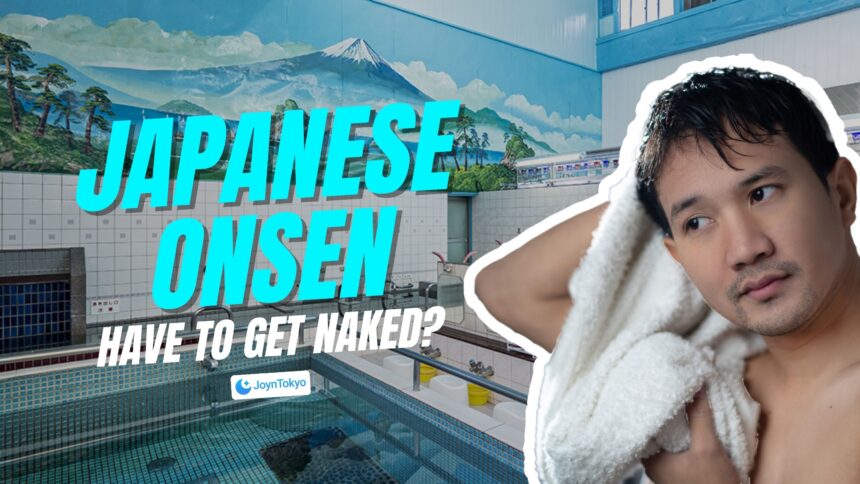For many foreigners, one of the most intriguing aspects of life in Japan is the public bath, commonly known as the onsen. Historically significant for centuries, onsen culture plays a special role in many Japanese people’s routines — serving as a space to rest, reflect, and let life’s cares literally wash away. But what is it really like to go to an onsen? Today, lets explore the essentials, informed by my own personal experiences.
Things to Know Before You Visit an Onsen
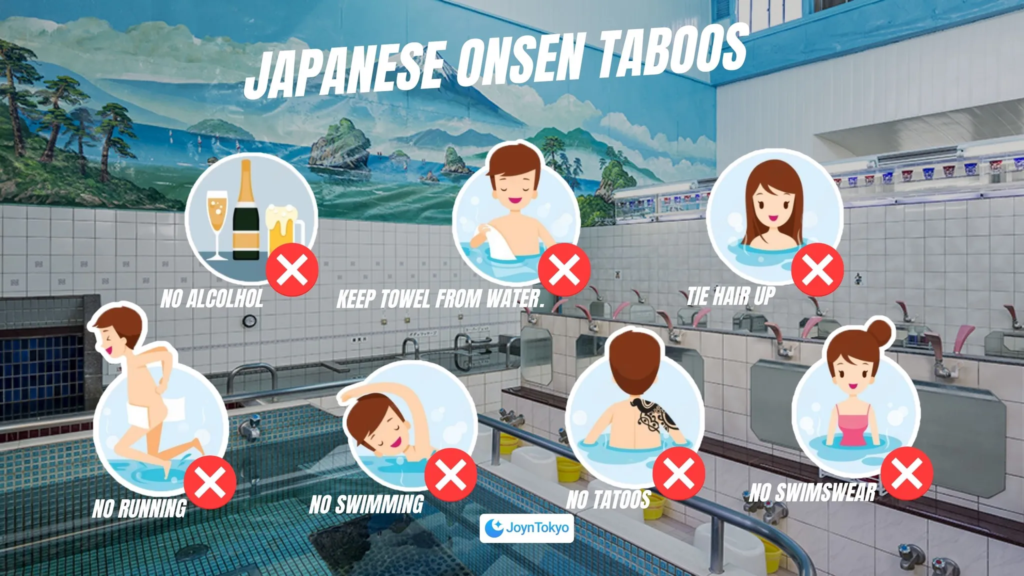
Public baths in Japan have been depicted in countless movies and anime, often as remote hot springs perched on a mountain or deep ina cave. But, to my surprise when I first came to Japan, they’re actually very common in urban neighborhoods. Sometimes referred to as sento, these public baths use artificially heated water. But, having been to traditional places in the countryside, my own local bath, and “theme park” onsen attractions, I know that there are a few standard rules and expectations that typically apply no matter where you visit.
Tattoos and Access
I don’t have tattoos, so I was okay, but many onsen and sento refuse entry to individuals with tattoos, largely because of their cultural association with organized crime. However, smaller or more progressive establishments may be lenient. My local bath is one such place, and you can often see people who are inked enjoying a dip. Though it was a little intimidating seeing someone with a full yakuza-style back tattoo wander into the sauna…
Nudity is Required

At nearly all onsen, it’s mandatory to bathe in the nude: no swimsuits, underwear, or other coverings allowed. The first time I had to strip off, it was really difficult — I wasn’t used to it, and I was there with a friend. But after a couple of times, it becomes pretty natural. These days, I’m more self-conscious about how much time I’m taking trying to shove my things into my locker.
Going to the Onsen for the First Time
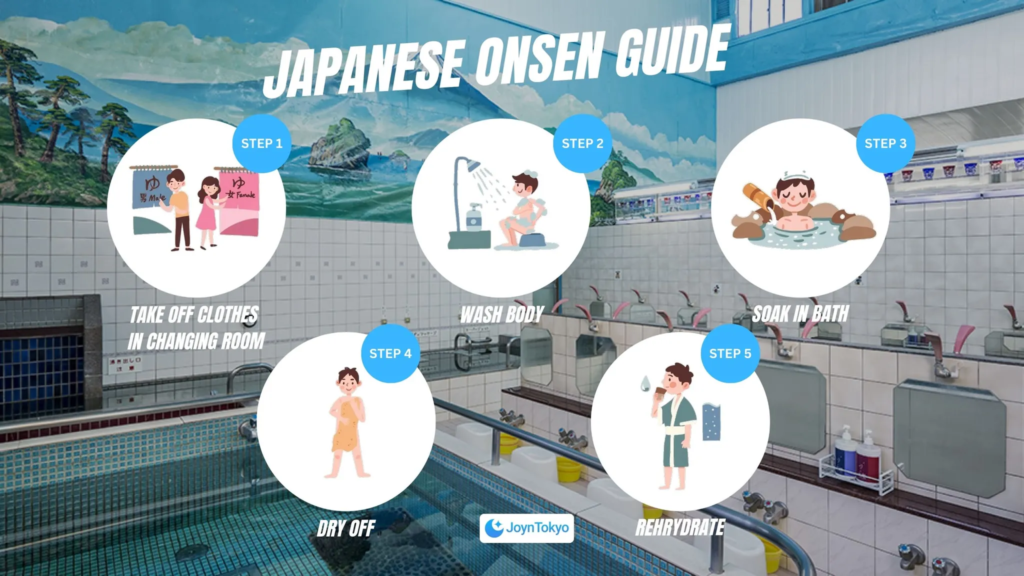
As mentioned, the initial step of getting all your clothes off can be nerve-wracking, but that all slips away. But there are other rules that, while they will become second nature, can trip people up the first time. Let’s go through a few.
The Washing Ritual

After undressing, you’ll move to the washing area. This step only takes a few minutes, but make sure you rinse away every hint of soap before entering the bath. Some men shave here as well, so feel free to do so if you like — just be mindful of others around you. I’ve never shaved, but the first time I was at an onsen, I thought that you had to use large plastic bowls to rinse yourself off, as was tradition. You can still do this, of course, but today I prefer to use the provided shower heads. It’s quicker and easier.
The Small Towel
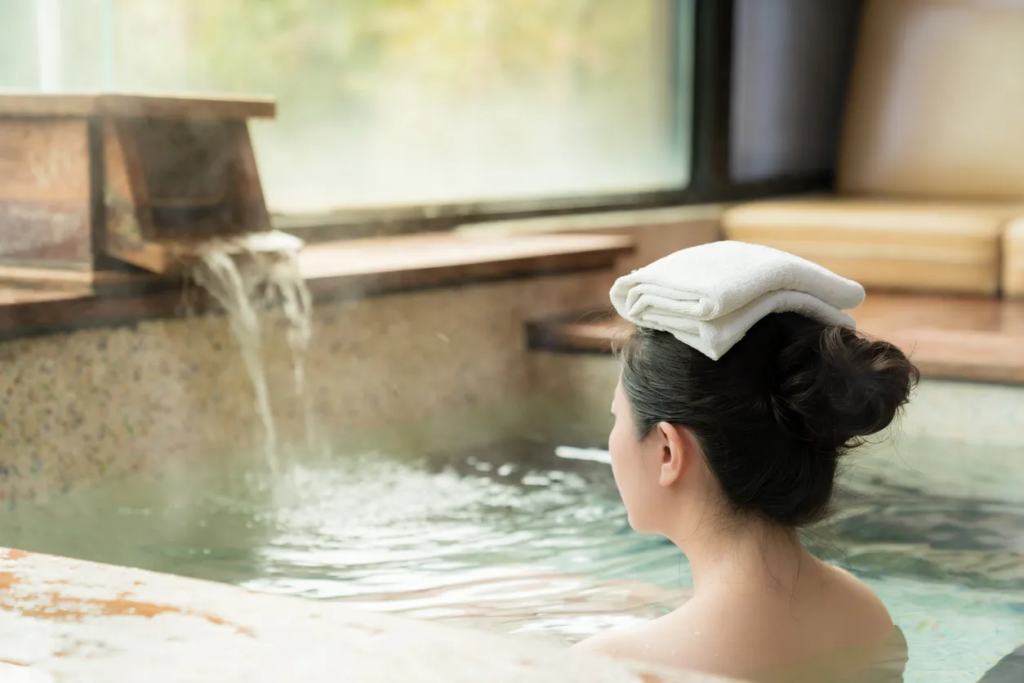
Many people bring or purchase a small towel to wipe off sweat or water from their face and hands. Some may use it discreetly to cover their front while walking around. These towels can be bought at the onsen — often for only a few hundred yen — and make for an interesting souvenir, too. I still have a bunch of Coco Furo towels at home (though I often use these more as hand towels than anything else).
What to Expect Inside

At first, you may stand out as a foreign visitor. Some regulars may keep to themselves, while others — especially those curious or eager to practice English — might strike up a conversation. During my extended visits, a few locals asked why I was at the onsen every day. They wondered if my shower at home was broken, and eventually it became normal for us to greet each other with a friendly “osu.” People’s reactions will vary depending on the location: in larger cities like Tokyo, where foreigners are more common, I don’t stand out quite so much.
Similarly, at big resort-style onsen, visitors are more accustomed to seeing foreigners or are simply busy enjoying their holiday, so I’ve had less spontaneous conversation there. I would say that as a rule, keep your expectations low if your main goal is to socialize — there are other, more suitable venues for that, but don’t be surprised to get a “where are you from?” style question. And if you can, ask questions yourself! I knew that it was against etiquette to dunk my head underwater, but I asked someone if it was alright to splash my face in the cold bath (it is).
Small Differences and Varieties
Each onsen or sento has its own unique character. Most offer basic heated baths, and some provide distinctive “mineral” or “carbonated” baths. For example, in my area, black water (*kuro-yu/*黒湯) baths are common due to local seawater sources. In regions like Kagoshima, geothermal activity creates more volcanic onsen with different mineral properties.
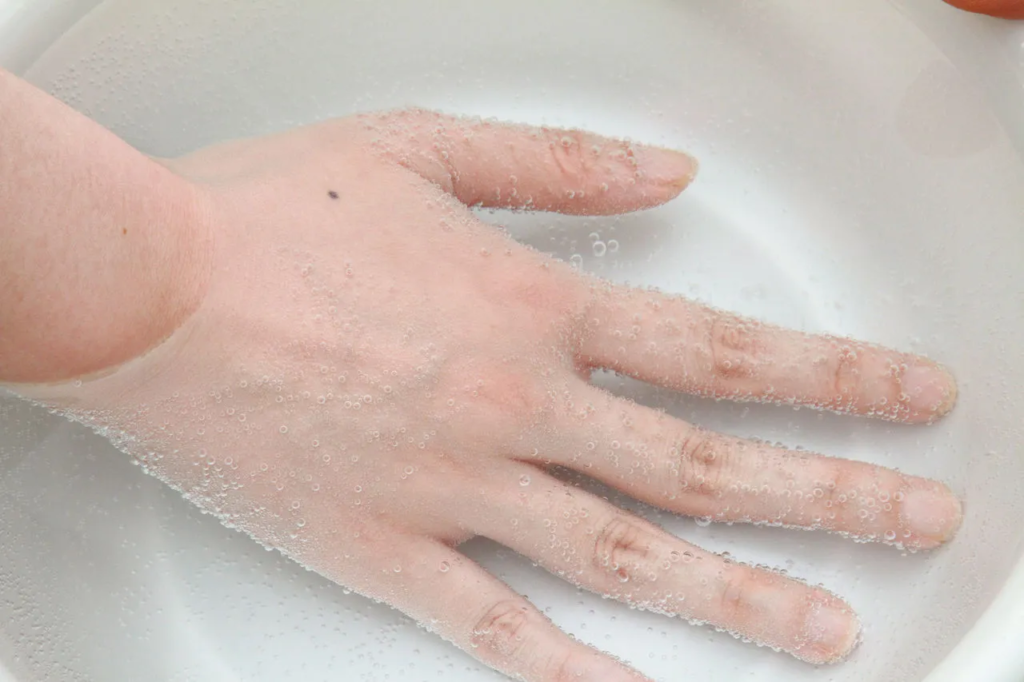
Saunas and Extra Fees
Many establishments also include a sauna, though some charge an additional fee (around ¥100 or so). Mine is free, so it’s usually pretty busy, and there’s a general unspoken rule not to stay more than ten minutes at a time, to let other people in. This isn’t universal, but mine also has small foam pads that you need to take in to keep your butt from touching the wood. Remember, the same no-clothes policy applies in the sauna, too.
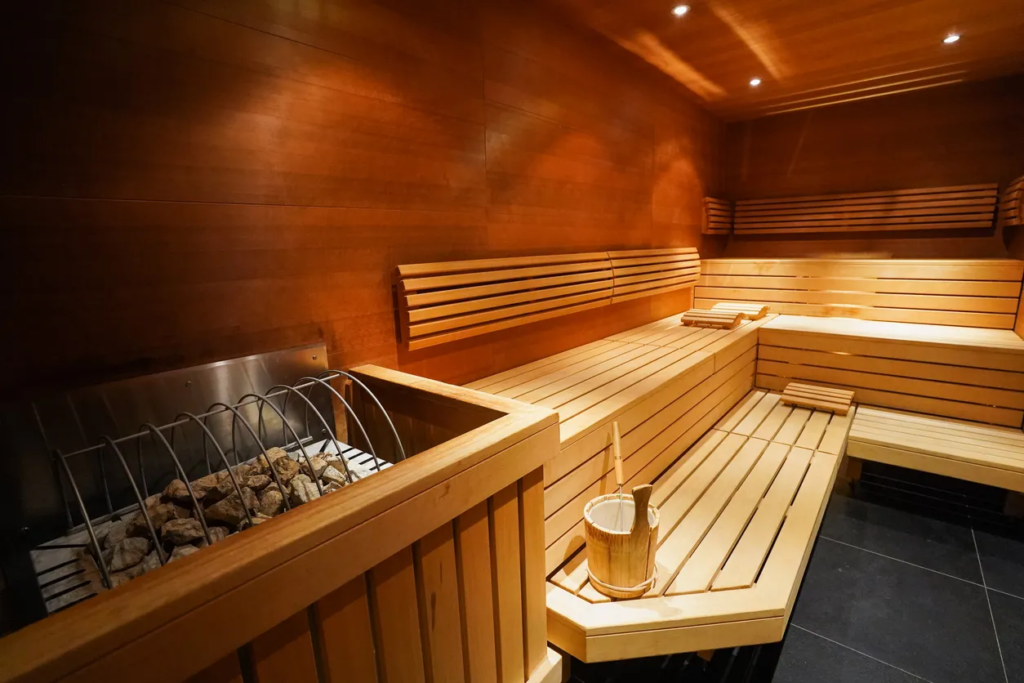
In Summary
Whether you’re in Japan for work or leisure, visiting an onsen (or a sento) is a quintessential experience. Far from mere novelty, it’s a genuinely relaxing way to unwind and immerse yourself in a cherished part of Japanese culture. As long as you’re mindful of the basic rules — washing thoroughly, respecting others’ privacy, and adhering to any tattoo restrictions — you’ll likely find that onsen visits become a highlight of your stay in Japan.

